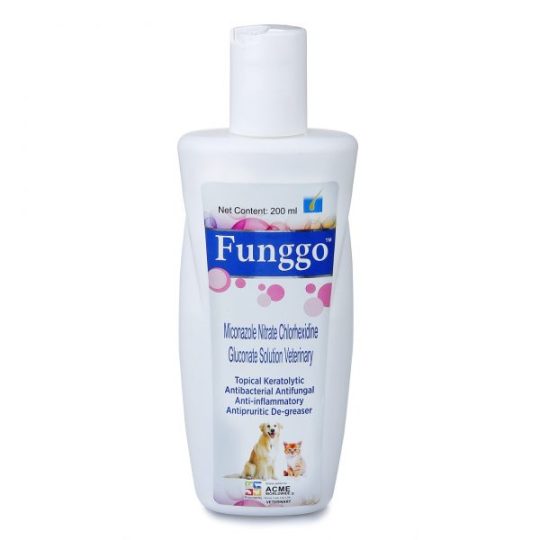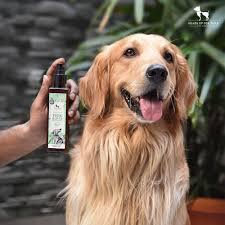Disinfecto Chemical Industries Private Limited is a world-class Animal Health Care manufacturer that serves, Livestock producers, Poultry Farms, Pet Owners, Veterinarians & people who are dedicated to improving the lives of farm & companion animals.
Don't wanna be here? Send us removal request.
Link
Cow repellent spray
Flea and tick remover
Can be used as a spray or dip
For cows, dogs, goats, and other large animals
For ticks, mites, lice, flies
Composition:
Cypermethrin : 10% w/v Solvent and Emulsifiers : q.s.
0 notes
Link
Disilon P5 (Povidone Iodine Antiseptic Solution) kills sensitive organism like bacteria, fungus, protozoa, and spores present on the skin.
It is also used to sanitize skin before a surgical procedure is performed
For external use only
0 notes
Link
Ticks and fleas are common parasites that can infest your pets and cause a range of health problems. Not only can they cause skin irritation, but they can also transmit diseases such as Lyme disease and Rocky Mountain spotted fever.
0 notes
Link
Amitraz 12.5% E.c. Natural Ticks, Fleas & Mites Repellent Spray. Cow/goat /camel/dogs (6ml)
For prevention and control of lice, mites, ticks and fleas in cattle and buffaloes.
To be used as a spray or dip only.
0 notes
Text
DIY Dog Shampoo for Allergies: Easy and Effective Recipes to Try at Home

If you prefer to use natural ingredients and make your own dog shampoo for allergies at home, here are some easy and effective recipes to try:
Oatmeal and Aloe Vera Shampoo:
1 cup plain oatmeal
1 cup water
1/2 cup aloe vera gel
1 tablespoon coconut oil
Instructions:
Grind the oatmeal in a blender or food processor until it becomes a fine powder.
Mix the oatmeal powder, water, aloe vera gel, and coconut oil together in a bowl.
Apply the mixture to your dog's coat and massage it in for 5-10 minutes.
Rinse thoroughly with warm water.
Chamomile and Tea Tree Oil Shampoo:
1 cup water
1 chamomile tea bag
1/2 cup liquid castile soap
1 tablespoon tea tree oil
Instructions:
Brew a strong cup of chamomile tea and let it cool.
Mix the cooled chamomile tea, liquid castile soap, and tea tree oil together in a bowl.
Apply the mixture to your dog's coat and massage it in for 5-10 minutes.
Rinse thoroughly with warm water.
Apple Cider Vinegar and Epsom Salt Shampoo:
1 cup water
1/4 cup apple cider vinegar
1/4 cup Epsom salt
1/4 cup liquid castile soap
Instructions:
Mix the water, apple cider vinegar, Epsom salt, and liquid castile soap together in a bowl.
Apply the mixture to your dog's coat and massage it in for 5-10 minutes.
Rinse thoroughly with warm water.
Before using any homemade dog shampoo, it's important to do a patch test on a small area of your dog's skin to make sure they don't have an allergic reaction. It's also important to consult with your veterinarian to ensure that the ingredients you're using are safe and appropriate for your dog's specific needs.
0 notes
Link
Dogs act like our best pals now it is our time to fulfill their needs by being best friends to them. Taking care of a dog’s grooming and health has become a routine task, to accomplish these very factors it’s essential to introduce dog nourishment products. Your dog plays around, goes on a walk, or travels with you which increases the risk of developing ticks and fleas.
0 notes
Photo

https://disinfecto.com/product/funggo-shop-anti-tick-dog-shampoo-online/
0 notes
Link
For A Quick, Water Free Bath
For A Shiny And Fresh Coat
Especially Helpful In Puppies Up To 2 Months Of Age
Post Grooming To Maintain Freshness And Hygiene
Smooth And Freshness Feel
0 notes
Text
Potential side effects of antifungal shampoo and how to avoid them
Anti fungal shampoos are generally safe and well-tolerated, but like all medications, they can cause side effects in some people. Here are some potential side effects of antifungal shampoo and tips on how to avoid them:
Skin irritation: Antifungal shampoos can sometimes cause skin irritation, such as redness, itching, and burning. To avoid this, make sure to follow the instructions provided with the product and avoid using too much shampoo. If you experience skin irritation, stop using the shampoo and contact a healthcare provider.
Dry scalp: Antifungal shampoos can be drying to the scalp, which can cause flaking and itching. To avoid this, try using a moisturizing conditioner after shampooing to help hydrate the scalp.
Allergic reaction: Some people may be allergic to the ingredients in antifungal shampoo, which can cause symptoms such as rash, hives, and difficulty breathing. If you experience any of these symptoms, stop using the shampoo immediately and seek medical attention.
Changes in hair color or texture: In rare cases, antifungal shampoos can cause changes in hair color or texture. If you notice any changes in your hair, stop using the shampoo and consult with a healthcare provider.
To avoid potential side effects, make sure to use the antifungal shampoo as directed, and avoid using too much or too frequently. It is also important to read the product label and ingredient list carefully to ensure that you are not allergic to any of the ingredients. If you have any concerns or questions about using antifungal shampoo, consult with a healthcare provider or dermatologist. They can help determine if the shampoo is the right treatment for you and recommend ways to minimize potential side effects.
1 note
·
View note
Text
Tips for preventing ticks on cats: Beyond using anti-tick spray
Using an anti-tick spray for cats is an essential step in protecting your cat from ticks. However, there are several other steps you can take to help prevent ticks on your cat. Here are some tips for preventing ticks on cats:
Check your cat regularly: Check your cat for ticks regularly, especially after they've been outside. Pay close attention to areas where ticks like to hide, such as around the ears, under the arms, and between the toes.
Keep your cat indoors: Keeping your cat indoors is the best way to prevent ticks. Ticks are most commonly found in grassy and wooded areas, so by keeping your cat indoors, you reduce their exposure to these environments.
Keep your yard clean: Keep your yard clean and free of tall grass and debris, which can be a breeding ground for ticks. Trim your grass regularly, remove any fallen leaves, and keep woodpiles and other debris away from your home.
Use tick preventatives: In addition to anti-tick spray, there are several other tick preventatives available for cats, including topical treatments, oral medications, and collars. Talk to your veterinarian about the best options for your cat.
Bathe your cat: Bathing your cat regularly can help to remove any ticks that may be hiding in their coat. Use a cat-specific shampoo and be sure to rinse thoroughly.
Use flea combs: Flea combs can help to remove ticks and other parasites from your cat's coat. Comb your cat regularly with a flea comb, paying close attention to areas where ticks like to hide.
By following these tips, you can help to prevent ticks on your cat and keep them healthy and happy. Remember, prevention is key when it comes to tick-borne diseases, so be sure to take steps to protect your cat from these parasites.
0 notes
Link
Clearkill Dog and Cat Flea and Tick Spray, 100 Ml,
CLEARKILL Spray is used on dogs for treatment and prevention of ticks and fleas.
It is easy to apply and safe to use.
Spray on the body of the animal form a distance of 10-20 c
0 notes
Text
The Environmental Impact of Dog Repellent Spray and Alternative Solutions in Lucknow

The use of dog repellent spray in Lucknow, or anywhere else, can have environmental impacts that should be considered. Dog repellent spray typically contains chemicals that can potentially harm the environment, particularly if it is not used responsibly. For instance, it can contaminate waterways, harm plant life and wildlife, and reduce air quality. It is, therefore, essential to consider alternative solutions that can reduce the environmental impact of dog repellent spray.
One alternative solution is to use natural remedies to deter dogs. This includes using vinegar, citrus, and pepper sprays, which are effective at repelling dogs without causing harm to the environment. Other options include using ultrasonic devices that emit high-frequency sounds that dogs find uncomfortable, but that do not harm them.
Another solution is to focus on preventing dog attacks from occurring in the first place. This can be done through measures such as educating dog owners on responsible pet ownership, creating and enforcing leash laws, and setting up designated dog-free areas in public spaces.
Furthermore, the use of dog repellent spray can be minimized by using non-toxic and environmentally friendly alternatives. This includes using noise deterrents such as air horns, whistles, or clapping, which can startle the dog and make them retreat.
In conclusion, while dog repellent spray is an effective way to deter aggressive dogs, its use can have environmental impacts that should not be overlooked. It is, therefore, important to consider alternative solutions that are environmentally friendly, such as natural remedies, noise deterrents, and preventive measures. By using these solutions, individuals can protect themselves from aggressive dogs while minimizing their impact on the environment in Lucknow.
0 notes
Link
Bensulph Shampoo helps to promote healthy skin regrowth.
Formulated for dogs, cats and horses Gentle, soap-free, no sulfur odor.
Helps to increase the amount of water the stratum corneum can absorb.
0 notes
Link
Anti-Tick Dog Shampoo which is used for treatment and prevention of ticks, fleas, lice & mites infestation in dogs. It also gives shine to the hair coat. Best Anti Flea & Tick Dog Shampoo By Disinfecto
0 notes
Text
Keeping Your Feline Friend Safe: A Comprehensive Guide to Anti-Tick Spray for Cats

As a responsible pet owner, keeping your feline friend safe from parasites like ticks is essential. One of the most effective ways to do this is by using an anti-tick spray for cats. Here's a comprehensive guide to help you understand everything you need to know about an anti-tick spray for cats and how to use it correctly.
What is Anti-Tick Spray for Cats?
Anti-tick spray for cats is a specially formulated insect repellent designed to prevent ticks from infesting your cat. The spray contains active ingredients that are safe for use on cats and effective in keeping ticks at bay.
How Does Anti-Tick Spray for Cats Work?
Anti-tick sprays for cats works by repelling ticks and other insects. The spray is applied directly to your cat's fur, and it provides long-lasting protection against ticks. The active ingredients in the spray prevent ticks from attaching to your cat's fur and kill any ticks that come into contact with it.
Why Use Anti-Tick Spray for Cats?
Ticks can pose a severe threat to your cat's health and well-being. They can transmit diseases such as Lyme disease and Rocky Mountain spotted fever. Using anti-tick spray for cats is an effective way to prevent tick infestations and keep your feline friend safe and healthy.
How to Use Anti-Tick Spray for Cats?
Using anti-tick spray for cats is easy. Follow these steps to ensure you use it correctly:
Choose a reputable anti-tick spray for cats.
Shake the bottle well before use.
Hold the bottle about 12 inches away from your cat's fur.
Spray the anti-tick spray onto your cat's fur, making sure to cover all areas, including the legs and tail.
Massage the spray into your cat's fur, making sure it reaches the skin.
Repeat the process every two to three weeks, or as directed on the bottle.
Conclusion
Ticks can be a significant problem for cats and their owners. By using anti-tick spray for cats, you can prevent tick infestations and keep your feline friend safe and healthy. Remember to choose a reputable anti-tick spray, follow the directions carefully, and apply it regularly to ensure your cat is fully protected.
0 notes
Link
Dogs act like our best pals now it is our time to fulfill their needs by being best friends to them. Taking care of a dog’s grooming and health has become a routine task, to accomplish these very factors it’s essential to introduce dog nourishment products. Your dog plays around, goes on a walk, or travels with you which increases the risk of developing ticks and fleas.
0 notes